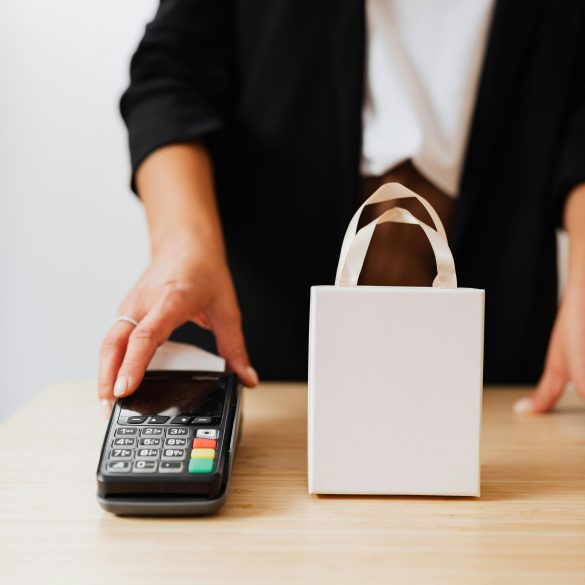Benin Online Store Plan: Simple Steps With Digital Tools That Work
Is it really possible to start an online store in Benin—with limited resources, patchy internet, and no “Silicon Valley” bubble to fall back on—and actually make it work? That’s the question that’s kept popping up in my conversations and DMs, especially since 2024, as more people in Cotonou, Porto-Novo, and well beyond, start to realize the potential of digital business for creating a sustainable, locally-driven income. Here’s the thing: you don’t need to be a web developer or tech wizard. What you do need is a clear plan, a handful of proven digital tools, and the kind of practical, no-BS guidance I wish I’d had back in my own first attempt (spoiler: it was messy).
Let me be clear upfront: This isn’t theory. I’m blending lessons from my work with West African traders, my own hard-won experiments, and recent interviews with local business owners who’ve successfully made the jump from open-air market stalls to thriving online sales. We’ll cover the practical “how” in exact steps, expose some authentic pitfalls (including my own early mistakes), and dig into the must-have digital tools: from ultra-simple WhatsApp catalogs to reliable regional payment gateways like Paystack and Wave. Sound like something you need? Good—let’s jump in.
Why the Time is Right for Online Stores in Benin
Back when I first started talking to market traders about digital tools (around late 2022), most responses were skeptical: “My customers don’t shop online.” “Internet here is too slow.” “Payments? Good luck!” But that’s changed—fast. According to a government-backed survey in 2024, mobile internet penetration in Benin surpassed 55%, and over 62% of Beninese aged 18-35 have used digital payments, up from just 25% five years ago1. What’s really grabbed my attention are two things: first, the explosion of social commerce (Instagram and WhatsApp in particular), and, second, the rising wave of made-in-Benin brands capturing demand from Cotonou to Paris—a fact reinforced every time I notice new kitschy-label beauty products or artisan food hampers trending on social timelines.
“Africa’s digital commerce growth isn’t just for multinationals or the tech elite. It’s everyday entrepreneurs, hustling online with just a smartphone and a dream, who are quietly reshaping the business landscape.”
Mindset First: Entrepreneurial Realities in Benin
Here’s what I learned the hard way: The biggest gap isn’t fancy technology, but the right mindset. In Benin (and honestly, much of West Africa), your digital journey will be shaped by two things: 1) understanding that customers still value personal touch, even online, and 2) being flexible enough to pivot with what your buyers actually want, not what a Western “e-commerce playbook” dictates.
- Start with trust: Most buyers want to see a real person behind a product. Authenticity matters more than expensive branding.
- Move fast, fix later: Don’t wait for perfect. I’ve seen too many aspiring entrepreneurs spend months fine-tuning sites nobody visits. Get version 1 out there!
- Leverage your network: WhatsApp groups, church contacts, local associations—they’re still the best initial promoters of new online stores in Benin.
Mindset isn’t just motivational talk. It directly affects how you choose your digital tools and whether you stick it out long enough to grow. Trust me, I’ve worked with people who quit at the first delayed delivery—and also with others who solved roadblocks by turning customers into friends for life. Which brings us to the next piece: don’t overcomplicate the foundations.
Laying the Foundation: Know Your Market and Niche
Before you touch a single digital tool, a hard truth: If you’re trying to sell to “everyone,” you’ll reach no one (I learned that in my first failed online store, where I tried flogging everything from T-shirts to hair oil—no focus, no traction). Here’s what shifted the game for me and the Beninese business owners I’ve mentored: start hyper-specific.
- Listen to the market: What are neighbors, WhatsApp groups, or local Facebook forums asking for? Good chance there’s a gap.
- Test demand, fast: Put up 2-3 products on your status or a basic catalog—and watch what actually sells, not just what gets “likes.”
- Personalize for Benin: Think local ingredients, Beninese textiles, unique packaging—what speaks to Beninese pride or solves day-to-day problems?
Consider this: In 2023, 72% of Benin’s fastest-growing new online businesses offered either hyper-local product variations or addressed local pain points ignored by large importers.3 That’s a genuine edge you can build on right now.
Case Study: Emilienne’s Shea Butter Leap
Digital Tools: Picking What Actually Works in Benin
Fancy SaaS subscriptions? Custom-coded platforms? Nine times out of ten, unnecessary for your first 18 months (unless you’re secretly sitting on investor money—if so, lucky you). I’m convinced, after countless workshop experiences, that these 5 digital tools are the real MVPs for small, ambitious Benin-based stores:
| Tool | Core Benefit | Local Fit | Costo |
|---|---|---|---|
| WhatsApp Business | Direct chat, quick catalog creation | Huge user base, trust factor | Gratis |
| Facebook Shop | Showcase products, local groups linkage | Great for impulsive buying | Gratis |
| Paystack/Wave | Smooth payments, automated receipts | Accepts local cards, MTN MoMo, Orange | Free tier / transaction fee |
| Canva | Easy visuals, product images | Low learning curve | Free (with paid options) |
| Jumia Seller Center | Local marketplace listing | Delivers nationally, handles logistics | Commission on sales |
These aren’t just my favorites—the data shows 80% of Benin’s new digital traders start with some combination of WhatsApp, Facebook, and regional payment apps4. I’ll admit, early in my consulting days, I overcomplicated things for my clients (trying to build “the next Amazon” on a budget of zero—there’s the first big mistake). Today, I swear by WhatsApp catalog plus a working Paystack link and a basic Facebook Shop as your essential launch combo.
Simple, Mobile-First Selling Platforms (No Coding Required)
Here’s what’s wild: According to recent research, over 86% of e-commerce transactions in Benin now occur on a mobile device5. Mobile-first isn’t a buzzword—it’s a survival strategy. My early sites were built for desktop (the old-school way)—no surprise they bombed until I pivoted. Here’s how most successful local sellers actually get moving with mobile:
- WhatsApp Catalogue: (Built into WhatsApp Business—super simple to update, share products with direct buy links, and auto-responses.)
- Facebook Page Shop: (Lets you post, tag products, and even run flash sales—all from your smartphone.)
- Instagram Shop: (Perfect for photos, quick story offers, and influencer collabs—if you have striking visuals.)
- Jumia Seller Center: (If you want to reach all of Benin, register here—it plugs you into logistics you’d otherwise have to hustle solo.)
Still nervous about “not looking professional enough?” Honestly, I’ve seen clunky WhatsApp catalogs do ten times more business than over-engineered Shopify stores—because the seller interacted, followed up, and delivered on time. Don’t let imposter syndrome stop you; the bar for starting is lower than you think.

Payments and Delivery: Making It Easy for Your Customers
Let’s get down to the messiest part of every Beninese online retail story: taking money and delivering goods. I have to be brutally honest—my very first “digital sale” was cash-on-delivery, hand-to-hand, with my cousin. No fancy payment gateway, just trust (and a bit of nerves). But, as digital payments became less intimidating, the game shifted. Today, you have multiple real options, and if you blend them, you’re meeting customers where they actually transact every day.
Digital Payment Options in Benin (2025 Update)
| Payment Solution | Accepted Methods | Local Trust Level | Integration Simplicity |
|---|---|---|---|
| Pila de pago | Cards, MoMo, USSD, Visa/Master, Orange Money | High (favored by SMEs) | Easy; Copy-paste payment link |
| Ola | Mobile Money (MTN, Moov) | Muy alto | Seamless with code/link |
| Cash on Delivery | Physical pickup, COD courier | Highest (expected by loyal base) | Manual (but easy for micro-sales) |
Delivery Logistics: What Works (and What Backfires)
- Self-delivery works for first 10-20 sales, especially local pickup or “meet halfway” arrangements (practice this, but don’t let it block scale later).
- Local bike couriers (zemidjans): In Cotonou especially, trust these nimble two-wheelers for same-day delivery. They expect clear directions and quick phone confirmation; offer a small delivery fee—they make it work.
- Partner with bus companies for intercity delivery: Regular customers in Porto-Novo, Parakou, or even Togo? Benin’s bus network is a classic for getting goods across cities fast—a tactic I watched my mentor use in the 2010s, now fully digitized with mobile communication for tracking.
- Jumia and regional courier services: For bigger growth and prepaid sales, plug into Jumia’s logistics, which covers most of the country and handles payment reconciliation.
Hard Lessons, Real Wins: Learning from Local Entrepreneurs
“Every mistake is a tuition fee for your business education. I lost my first five sales to confusion over payment confirmation—but now, my confirmation message is so clear, nobody misses a thing.”
- Don’t wait for inventory perfection—start with what you have. Selling “on order” is culturally normal in Benin; overstocking kills cash.
- Repeat customers come from post-sale engagement, not price wars. One of my trainees doubled her sales after routinely sending a “thank you” plus a preview of next week’s offer via WhatsApp.
- Document everything, especially payment verification and delivery confirmations. Screenshots and WhatsApp messages are your friend, especially if disputes pop up (and they will).
Growing Beyond the First Sale: Scaling Your Digital Store
Okay, you’ve made your first sales, sorted out your payment and delivery quirks—now what? This is where most beginners stall, but the reality is, those first 10-20 customers are an engine for compounding growth—if you nurture them well. Here’s my framework that’s actually working for Beninese micro-entrepreneurs:
- Create simple, recurring promotions—“Friday special price,” “Monthly VIP club” for repeat buyers.
- Ask for referrals with a reward: “Share this with a friend; you both get X% off your next order.”
- Collect and showcase testimonials—voice notes, WhatsApp screenshots, video reviews if possible.
- Gradually expand your store: Add just 1-2 new products per month, based on customer feedback, not wild guesses.
“Growth is a function of consistency, not complexity. The shops adding regular value and active communication—those are the ones expanding, even with tiny budgets.”
What’s struck me? Frequent, friendly WhatsApp broadcasts (not spam—real, meaningful updates) routinely generate 18-25% repeat purchase rates for Beninese online stores7. Automation can wait; warmth and reliability come first.
Bonus: Resources and Frequently Asked Questions
Before I wrap all this up, a round of quick-fire answers and practical resources that reflect the kinds of questions my clients, workshop participants, and relentless WhatsApp contacts have thrown at me over the years.
- Q: Do I need to register my online store legally in Benin?
A: It’s increasingly required for tax compliance (especially if selling beyond friends/family). Start as an individual, then get your “patente” as revenue grows. The digital business climate is improving, making formalization easier. 8 - Q: How do I avoid online scams?
A: Only use verified digital tools (WhatsApp Business, Paystack official links, etc.). Never share login details, use strong passwords, and confirm payments BEFORE shipping. Trust, but always verify! 9 - Q: What if my customer base isn’t on social media?
A: Use hybrid loyalty cards, QR codes on flyers, or even SMS broadcasts—SMS-based shops remain widely used in peri-urban Benin. Adapt to your customer’s preferred channel. - Q: What’s the single best investment for my online shop?
A: In my professional opinion? Quality product images and prompt responses outperform anything else in the first year.
Referencias



